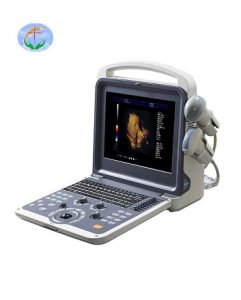Summary of basic knowledge of ultrasound (part one)
Section I Method of operation
- Body position
(1) Supine position: most commonly used.
(2) Left lateral position: it is a necessary supplementary position.
(3) Right lateral position: visualization of the left lateral lobe is particularly useful.
(4) sitting or semi-reclining position.
- The probe location can be divided into four parts: right subcostal, subxiphoid, left subcostal and right intercostal
two Maximum oblique diameter of the right lobe of the liver
- The oblique section of the liver under the right costal margin where the right hepatic vein and the middle hepatic vein drained into the inferior vena cava were used as the standard measurement section.
- Measurement location: The measurement points were placed at the liver capsule at the anterior and posterior edges of the right lobe of the liver, respectively, and the maximum vertical distance was measured.
- Normal reference value (cm) : 12-14cm for normal adults.
Three. Anteroposterior diameter of the right lobe of the liver
- Measurement standard section: The largest section of the right lobe of the liver in the fifth or sixth intercostal space was the standard measurement section.
- Measurement location: The measurement points were placed at the liver capsule at the anterior and posterior edges of the right lobe of the liver, respectively, and the maximum vertical distance was measured.
- The normal reference value (cm) is 8-10cm for normal adults.
Four. Thickness and length of the left lobe of the liver meridian
- Measurement standard section: The sagittal longitudinal section of the left lobe of the liver through the abdominal aorta was used as the standard measurement section, showing the septate muscle upward as far as possible.
- Measurement location: the left lobe thickness measurement points were placed at the widest anterior and posterior edge of the left liver capsule (including the caudate lobe), and the maximum anteroposterior distance was measured. The left time length measurement points were placed at the upper and lower edge of the left liver capsule parallel to the human midline.
- Normal reference value (cm) : the thickness of the left lobe of the liver does not exceed 6cm, the long diameter of the left lobe of the liver does not exceed 9cm.
Five. The width of the portal vein and common bile duct
- Standard section: the longitudinal section of the first hepatic hilum below the right auxiliary margin was used as the standard section, and the full length of the common bile duct should be shown as far as possible to the rear of the pancreatic head.
- Measurement location: Portal vein measurement requires that its width be measured at 1-2c m from the first hepatic portal, and common bile duct measurement requires that its width be measured at the widest point of its full length.
3, the normal reference value (cm) : the width of main portal vein (inner diameter) 1.0-1.2 cm, the width of common bile duct (inner diameter) 0.4-0.6 cm.
Six. Thickness of spleen
- Measurement standard section: oblique section of the left intercostal spleen, required to show the image of the splenic vein exiting the splenic hilum.
- Measurement location: The measurement point was selected from the splenic hilum edge to the opposite edge of the spleen.
- Normal reference value (cm) : no more than 4cm in normal adults.
Seven. Length of spleen
- The standard section was oblique section of the left intercostal spleen. The full length of the spleen was shown as far as possible, and the image of the splenic vein exiting the splenic hilum was also shown.
- Measurement location: The measurement point was selected at the capsule of the upper and lower pole of the spleen.
- Normal reference value (cm) : no more than 12cm in normal adults.
Section II Biliary ultrasound measurement methods and normal values
one Measurement of gallbladder
- The long diameter of the gallbladder. The length of the neck to the base of the gallbladder. When the gallbladder is folded, it should be measured in sections, and the long diameter should be the sum of the sections. Normal values: less than 8cm.
- Transverse diameter of gallbladder: is the widest diameter of the gallbladder body. Normal values: usually less than 3.5cm.
- Gallbladder wall thickness: normal value: less than 2.5mm.
two Bile duct measurement
- The upper part of the extrahepatic bile duct accompanied the ventral side of the portal vein, and its inner diameter was less than 1/3 of the inner diameter of the portal vein at the same level. The inner diameter of the lower segment was less than 8.smm, which was posterior to the pancreatic head and descending in front of the inferior vena cava. The inner diameter of the normal common bile duct increases with age, up to 10mm in the elderly.
- Intrahepatic bile duct: located ventral to the left and right branches of the portal vein, its diameter is mostly less than 2mm.


